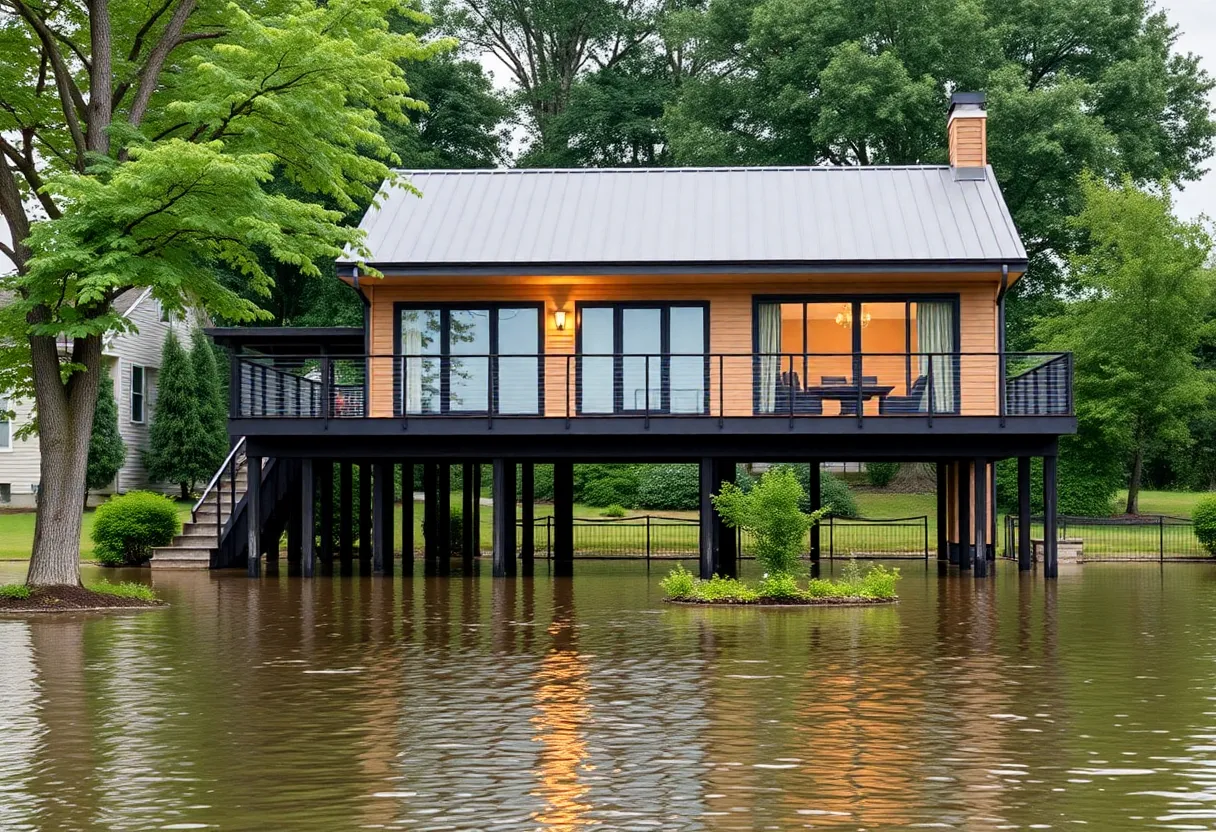What Are the Essential Considerations for Building a Home in a Flood Zone?
Building a home in a flood-prone area presents unique challenges that demand careful planning and strategic decision-making. Failure to address these considerations can lead to significant financial loss, safety hazards, and long-term structural issues. This comprehensive guide explores the critical factors to evaluate before embarking on construction or purchase in flood zones, emphasizing the importance of informed decision-making.
Understanding Flood Zone Designations and Regulatory Frameworks
What Are Flood Zone Maps?
Flood zone maps categorize geographic areas based on their flood risk. These designations are essential in assessing potential hazards and guiding construction protocols. The zones typically include:
- High-Risk Zones (Special Flood Hazard Areas – SFHAs): Areas with a 1% annual chance of flooding. Construction here requires strict adherence to floodplain management regulations.
- Moderate to Low-Risk Zones: Areas with lower percentage risks, still requiring due diligence and appropriate planning.
It’s vital to consult current flood maps from local or federal agencies to understand the specific designation of a property. These maps influence building codes, insurance requirements, and permissible construction practices.
Legal and Regulatory Considerations
Building in a flood zone often involves compliance with local, state, and federal regulations. These include:
- Floodplain Management Regulations: Enforced by local authorities to reduce flood risks and protect public safety.
- Floodplain Permitting: Construction typically requires permits that ensure adherence to standards such as elevating structures above Base Flood Elevation (BFE).
- Building Codes: May specify critical design modifications like flood-resistant materials, foundation requirements, and emergency access provisions.
Understanding and complying with these regulations before construction is crucial to prevent legal issues and reduce flood vulnerability.
Site Selection and Land Assessment
Evaluating Topography and Soil Conditions
Topography significantly influences flood risk. Preferably, select sites situated on higher ground, away from floodplains or flood-prone waterways. Soil testing is equally important:
- Unstable, saturated soils increase risk of foundation failure.
- Drainage characteristics inform the choice of foundation and landscape grading.
Proper site assessment reduces flood exposure and ensures the longevity of the structure.
Analyzing Historical Flood Data
Review local flood history to understand frequency, severity, and patterns. Past flooding instances help in assessing risk levels and determining appropriate mitigation strategies.
Consultation with hydrological experts or utilizing detailed flood studies enhances reliability in risk assessment, guiding appropriate site modifications or construction techniques.
Design Strategies for Flood-Resilience
Elevating the Structure
The most effective way to mitigate flood damage is elevating the home above the expected flood level. Techniques include:
- Elevated Piers or Columns: Raising the structure on stilts or pilings prevents floodwaters from entering living spaces.
- Basement-Free Design: Avoiding underground spaces eliminates the risk of water intrusion and related damage.
Building above the Base Flood Elevation (BFE) is essential to qualify for federal flood insurance and minimize risk.
Use of Flood-Resistant Materials
In flood-prone zones, selecting materials resistant to water damage is non-negotiable. These include:
- Concrete, brick, or stone for foundations and lower walls
- Water-resistant drywall and coatings
- Sealants and waterproof membranes for foundations and basements
Such materials limit deterioration and facilitate easier cleanup after flooding events.
Design Features for Rapid Drainage and Water Management
Generate a landscape that promotes runoff away from the building. Strategic grading, swales, and berms redirect floodwaters, reducing pressure on the structure. Incorporating waterproof barriers, such as flood gates and shields, offers additional protection for openings like doors and windows.
Infrastructure and Utility Considerations
Elevation of Critical Systems
Elevate electrical systems, HVAC units, water heaters, and other utilities above the BFE. Use of utility lifts and waterproof enclosures prevents disruption and damage during floods.
Redundancy in critical systems ensures continued operation during and after flood events, enhancing resilience.
Designing for Emergency Access and Egress
Ensure safe and reliable access routes unaffected by floodwaters. Elevated driveways, dedicated emergency exits, and flood-resistant access paths are advisable.
Insurance Implications and Financial Planning
Mandatory Flood Insurance
In designated flood zones, flood insurance is often mandatory for mortgage approval. Policies cover potential damages, but premiums can be high. Proper risk mitigation measures can help reduce costs.
Cost-Benefit Analysis of Mitigation Measures
Investing in elevating and flood-proofing features results in significant long-term savings. Reducing flood damage potential minimizes insurance premiums, repair costs, and liabilities.
Long-Term Maintenance and Monitoring
Routine Inspection and Upkeep
Regularly inspect drainage systems, foundation integrity, and flood barriers. Maintenance ensures continued effectiveness of flood mitigation systems.
Monitoring Climate and Flood Risk Trends
Stay informed about changing weather patterns and flood risks. Incorporate adaptive design features that can accommodate future increases in flood severity.
Professional Consultation and Planning
Engage with architects, engineers, and floodplain specialists early in the planning process. Their expertise guides compliance, safety, and design efficiency, tailored to site-specific conditions.
Conclusion
Building in a flood zone requires a comprehensive understanding of geographic, regulatory, and technical factors. Prioritizing elevation, using resistant materials, designing for water management, and planning for resilience are key elements in ensuring safety and sustainability. Attention to these considerations significantly reduces flood-related risks and financial burdens, fostering safer, more durable homes in potentially vulnerable areas.
Author: STAFF HERE CLEVELAND WRITER
The CLEVELAND STAFF WRITER represents the seasoned team at HERECleveland.com, your premier source for actionable local news and information in Cleveland, Cuyahoga County, and beyond, delivering "news you can use" with in-depth coverage of product reviews for personal and business needs, local business directories, politics, real estate trends, neighborhood insights, and state news impacting the region—backed by years of expert reporting and robust community input, including local press releases and business updates, while providing top reporting on high-profile events like the Rock and Roll Hall of Fame inductions, Cleveland International Film Festival, and holiday parades, alongside key organizations such as the Cleveland Clinic, Cleveland Orchestra, and Great Lakes Science Center, plus leading businesses in manufacturing and healthcare like Sherwin-Williams and University Hospitals, and as part of the broader HERE network including HEREDayton.com, offering comprehensive, credible insights into Ohio's vibrant landscape. HERE Cleveland HERE Dayton





